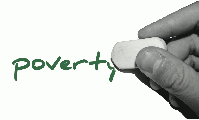
Elimination of poverty is the common goal of humanity. The Sustainable Development Goal of the UN targets to eliminate extreme poverty by 2030. Extreme poverty now became the monitoring target for scaling and fighting poverty now.
What is extreme poverty?
Extreme poverty is the situation where even the selected minimum consumption requirements are not met. The UN has defined extreme poverty as a “condition characterized by severe deprivation of basic human needs, including food, safe drinking water, sanitation facilities, health, shelter, education and information. It depends not only on income but also on access to services.”
The World Bank is the global institution dedicated for fighting poverty. It has developed several attempts to measure and compare poverty levels across countries. One such tool is its international poverty line which is expressed as dollar earnings per day that can meet minimum consumption requirements in all countries. The Bank’s extreme poverty is now emerged as the international scale to measure poverty globally and to make comparisons among countries.
In 2015, World Bank has upgraded its extreme poverty line by increasing the income requirements.
As per the World Bank’s latest poverty measurement methodology, international extreme poverty line is US$1.90 (2011 purchasing power parity [PPP] U.S. dollars) per individual per day. Previously this extreme poverty line was earning of $1.25 a day, at 2005 international prices.
Global Poverty as per the new methodology
As per the new estimate, the World Bank estimates that less than 10% of the world’s population live under its new threshold of $1.90 a day.
There occurred a dramatic fall from more than 1 billion population in extreme poverty in 2011, when the poverty line was $1.25 (measured in 2005 US dollars). Following are the main global poverty trends:
- In 2013, 10.7 percent of the world’s population lived on less than US$1.90 a day, compared to 12.4 percent in 2012. That’s down from 35 percent in 1990.
- In 2013, 767 million people lived on less than $1.90 a day, down from 881 million in 2012 and 1.85 billion in 1990.
- Half of the world’s poor live in Sub-Saharan Africa and a third in South Asia. The largest number of poor people lives in India despite the country achieved tremendous progress in poverty reduction.
- The reduction in extreme poverty was mainly driven by East Asia and notably China and Indonesia—and South Asia –notably India.
Inequality reduction is the best way to eliminate poverty
In the fight against poverty, the new approach of the Bank is that inequality is to be reduced to eradicate poverty. This theme is reflective in its report titled ‘Poverty and Shared Prosperity 2016’.
The report says that inequality is the biggest threat for realizing poverty reduction. ‘Hence we need Poverty and Shared Prosperity’. Bringing shared prosperity of the bottom 40 percent of populations in every country is the best way to eliminate poverty.
*********








